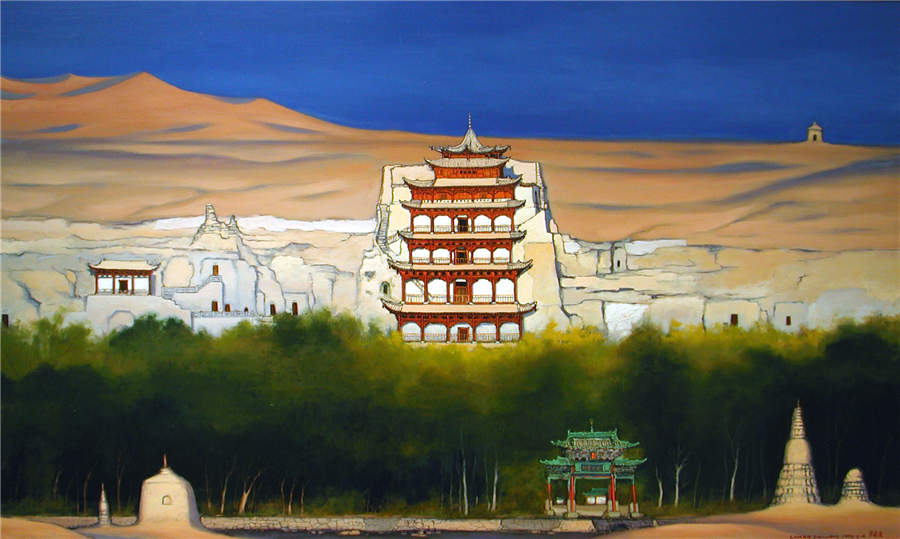







 |
|
A painting portraying Mogao Grottoes in Dunhuang [Photo provided to China Daily] |
Different styles
Sometimes the same Buddhist stories are presented in different styles.
Ma cites the classic Buddhist story about a prince who sacrifices himself to feed tigers.
Cave 428 and Cave 254 have murals that present the story, but the one in Cave 254, completed during the Northern Wei Dynasty (AD 386-557) is more in the Han ethnic style, looking more unrestrained and free, compared with that in 428, drawn during the Tang Dynasty (AD 618-907), which is more ornamental, Ma says.
Because of the complicated procedure, copying a 6-sq m mural would take two to three people two years to complete.
"Now it's easier for me to do a copy," Ma says. "But I have a lot of other work to do, and It took me four years, from early 2012, to finish doing the facsimile of the mural on the east wall of Cave 320. I had to do the management work, write papers and do my own artistic works.
Last year he completed 500 ink and wash paintings.
"This time we used 3-D point-cloud technology to collect the digital information of the whole cave. Based on that we can build a wooden model of the cave and draw the outline of the murals."